
Rain, rain, go away. Little Johnny wants to play.
Johnny must not have been a photographer. If he was, he might know that when the weather gets bad, the photos get good. Rainy days often provide the drama, the light, and interesting subjects to photograph. The key is knowing what to shoot and how to shoot it. Here are some things to help you make great images when the Raindrops Keep Falling on your Head. (Catch the song title? You’re gonna notice a theme here. Just for fun, see if you can name the artist associated with the rain songs – answers at the end of the article.)

High and Dry
Camera equipment and water don’t mix well and so if you’re planning to be out shooting in the rain, a means of keeping your equipment dry is important. Some more expensive professional cameras and lenses are what they call “weather sealed,” but even then, it’s not a good idea to venture out for long in the rain without protection. Most cameras and other electronics gear is not sealed nearly as well and will need extra precautions. I have seen photographers shoot with an umbrella, but it’s hard to hold while shooting. My experience is often wind accompanies the rain and when the drops come in sideways an umbrella more of a hassle than anything.
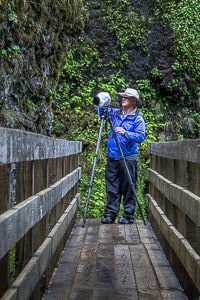
A simple plastic bag will suffice in many cases. A step up from that is something like the OP/Tech Rainsleeve, pretty much a glorified plastic bag with a drawstring, but quite functional and cheap enough at two for under $7.00. I keep a couple in my pack and have used them in a drenching Oregon rain where they worked fine. Stepping up from there are rain covers like the Mudder Rain Cover Camera Protector or the Altura Photo Professional Rain Cover, either under $13.00 and much more durable for those photographers who plan to shoot in wet conditions more often. As for keeping yourself dry, there’s no end of raingear to choose from. Personally, I found this Trespass Qikpac jacket and matching pants and again have used them to stay comfortably dry in a Columbia Gorge, (Oregon) downpour. I like that they pack into tiny stuff bags I can take with me when rain threatens. They are also breathable so you don’t wind up wet and clammy from perspiration like some raingear can cause.
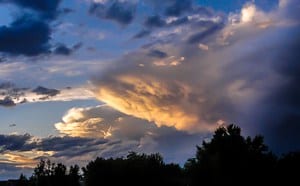
Get Off of My Cloud
It’s not unusual that good photos can be taken as a storm gathers or as it retreats when the clouds are spectacular. In fact, most photographers know that “nice weather”, a clear, cloudless “bluebird day,” makes for boring photos with nothing of interest in the sky. So, when the forecast calls for an impending storm, start watching the sky for interesting clouds and make the most of them in your photos. Often you may want to compose the shot so the sky takes up the upper two-thirds of your shot, keeping the land to the lower third. (You have heard of the “rule of thirds” yes?) Rarely will you want to put the horizon down the middle of the frame.

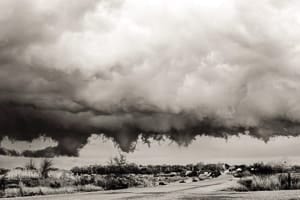
As for exposure, know that often clouds can be bright white in spots and very dark underneath. It’s a good practice to shoot in Raw format and expose so the whites are as far to the right of the histogram as possible without crushing them and blowing out the highlights. On really dark and cloudy days, you may need to bring up your ISO a bit. A circular polarizer can help to pop the clouds against the background, but be careful using a polarizer on a really wide lens where it may cause part of the sky to be dark and the other half light with strange patterns hard to eliminate in editing. Shoot on a tripod whenever possible so you can go to slower shutter speeds if you need to without the concern for camera shake.
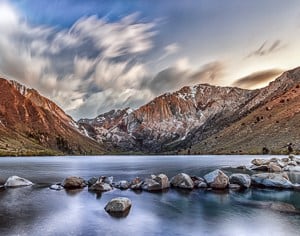
Another technique to try when the clouds are moving fast is very long exposures. Put on a neutral density filter, be on a tripod, and go for extended shutter speeds. You will be able to produce interesting streaked cloud images.
Be on the lookout after the storm too. Sometimes the sun can break through with dramatic color and light.
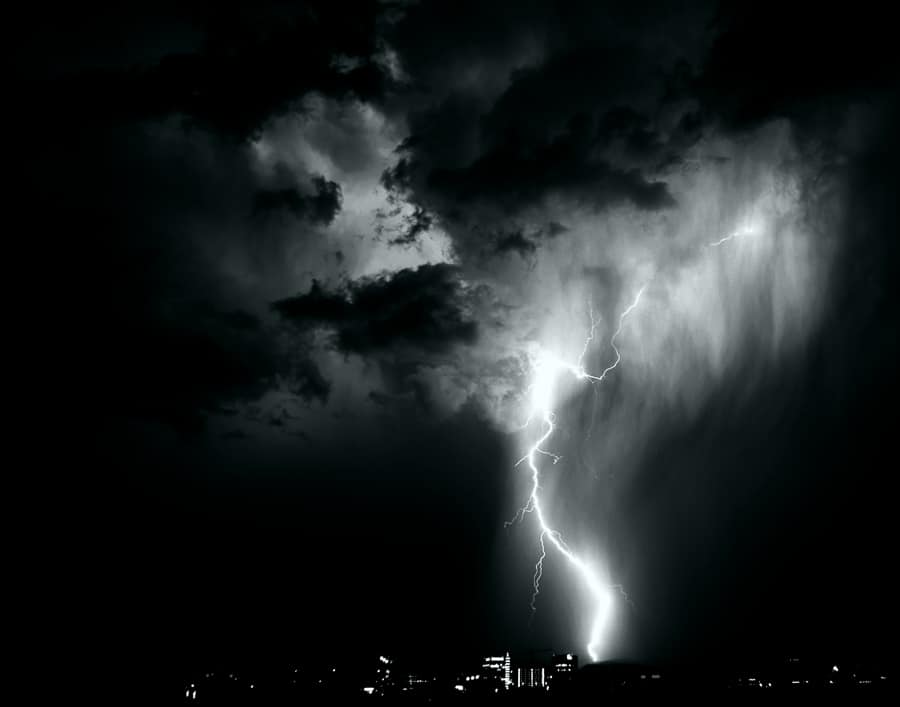
Thunder and Lightning
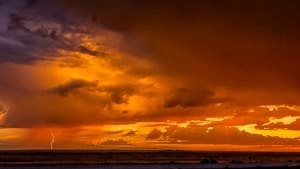
An exciting spectacle to be caught on camera is lighting. In some places at certain times of the year, thunderstorms are so prevalent you can almost count on lightning accompanying a rainstorm. How to shoot it, (and do so safely), is a subject onto itself. Improve Photography writer Rusty Parkhurst wrote a great article on it here. As for equipment, if you plan to do lightning photography regularly, a device like the MIOPS Trigger which I reviewed in this article could be a big help.
Have you Ever Seen the Rain?
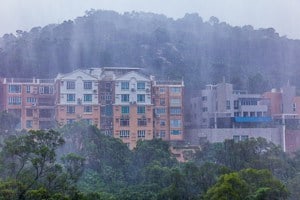
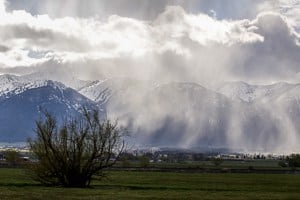
When the drops start to fall, you may find that trying to make a photo of the falling rain is harder than you think. The problem you may find is even when it’s pouring, the rain just doesn’t show up well in a still photo. Often, rather than actually seeing any rain, the image will simply look hazy with reduced contrast. Most of us who have seen movies where it’s raining are used to seeing the drops falling and splashing on the ground with a dramatic look. Backlighting is the key to that look and we’ll talk more about that in a bit, but what you’ll want to look for is the streaks under a cloud that show the rain falling. Sometimes such streaks will appear but the drops evaporate before reaching the ground, what meteorologists call “virga.” This can make for good photos with the right light.
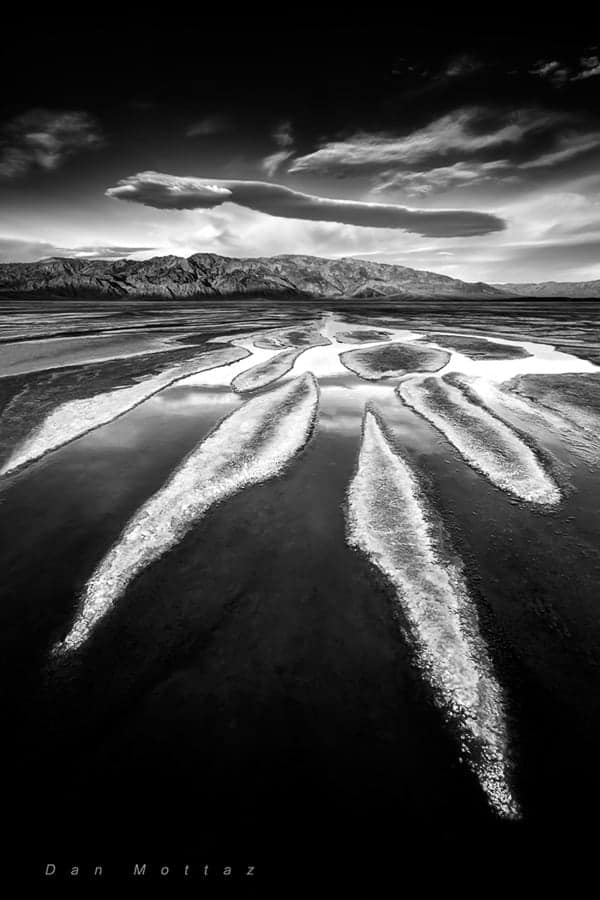
There are other ways to “see” the rain or its effects. With higher shutter speeds you can capture drops splashing into puddles and rain rolling off objects. Rain on windowpanes or car windows can make for some nice shots. With lower shutter speeds you can capture the rain as streaks which can also be effective. Experiment!
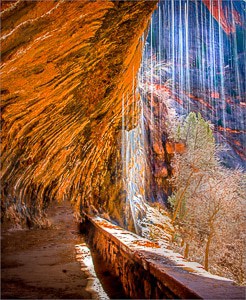
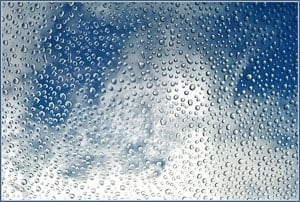

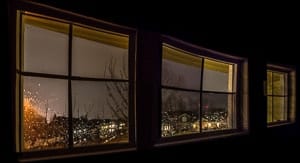
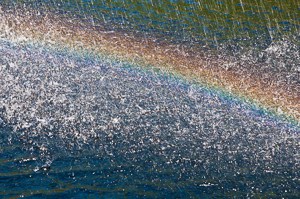
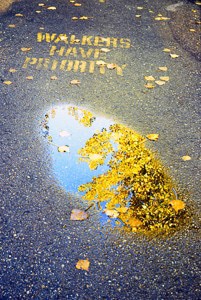
Splish, Splash
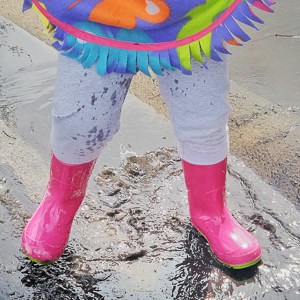
A fun photo subject is to capture the actions of people in the rain.
- People with umbrellas, (or people without umbrellas running to get out of the rain),
- People jumping over puddles, (or kids splashing happily in the puddles).
- People working and playing in the rain.
- People looking through rain-spotted windows, (shot from inside or outside).
- People looking happy (or not so much) that it’s raining.
Rain adds emotion to an image and a rainy day is a great time to go where people are and photograph their actions. Go make great “story-telling” images!
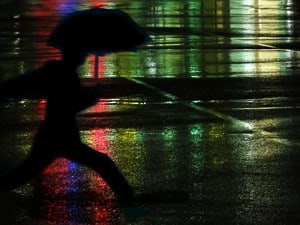
Reflections
When things get wet, they reflect the light much more. Contrast and colors are accentuated. Reflections in puddles can make for interesting shots. Go out at night in a city where there are many colored lights and watch for the reflections on the wet streets, often a great exercise in abstract photography, “watercolors” if you will. See how the rain beads on some surfaces and photograph the drops.

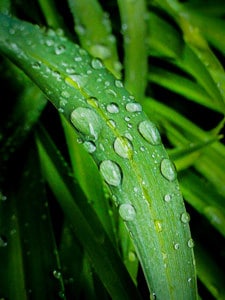

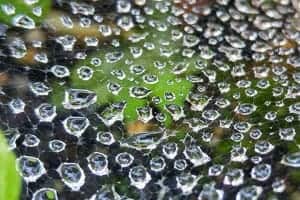
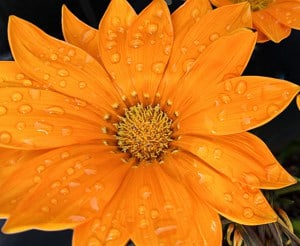
Raindrops on Roses – (My Favorite Things)

Most know this as a lyric in the song, “My Favorite Things.” I have to confide, shooting raindrops on flowers, leaves, spider webs, and all manner of objects is one of my favorite things. This is a great time to get out the macro lens. Look for the way raindrops add interest to ordinary objects and get in real close and you’ll see how a drop can act as a tiny fish-eye lens, reversing the world and giving you a picture-in-a-picture.
Perhaps you live in a climate where it doesn’t rain much? No worries, get out the garden hose or a spray mister and gently wet the flowers and foliage so there are water drops to shoot. (I won’t tell if you don’t that the shots weren’t of “raindrops.”)
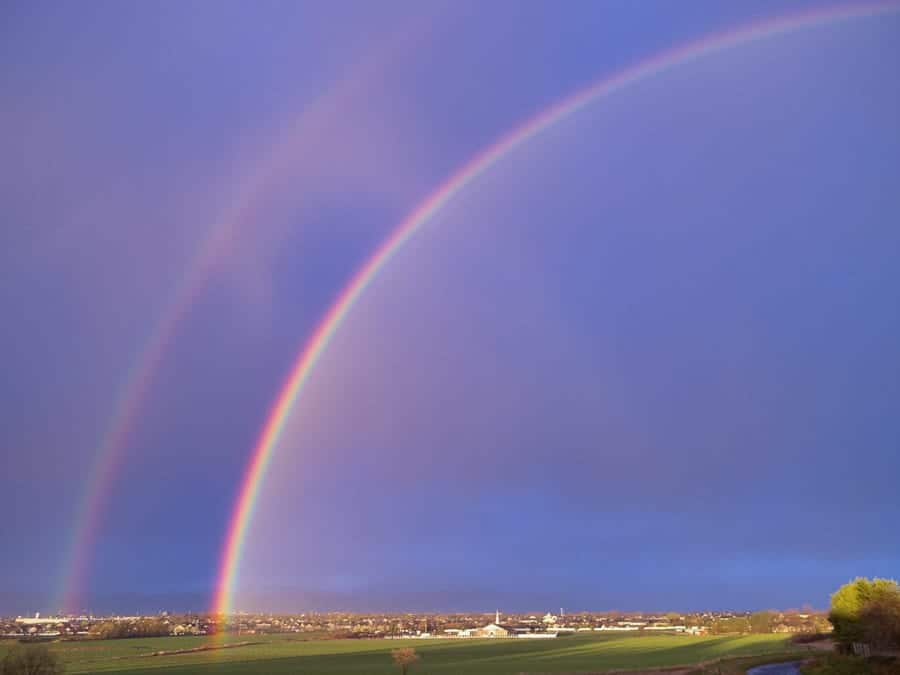
Somewhere Over the Rainbow
If you’re lucky, you may get to see a rainbow while out photographing in the rain. They don’t use the term, “chasing rainbows,” for nothing as often they are hard to find and when they do appear, it might be only for a few moments. You should know that two components are needed to produce rainbows; rain drops or water mist in the air and sunlight or some other bright light source. If you see rain falling in one area while the sun is shining from 180-degrees in the opposite direction, start looking for a rainbow, a double rainbow if you’re really lucky! I’ve often seen this just after dawn or just before sunset where the sun is low and the rain is falling on the opposite horizon.
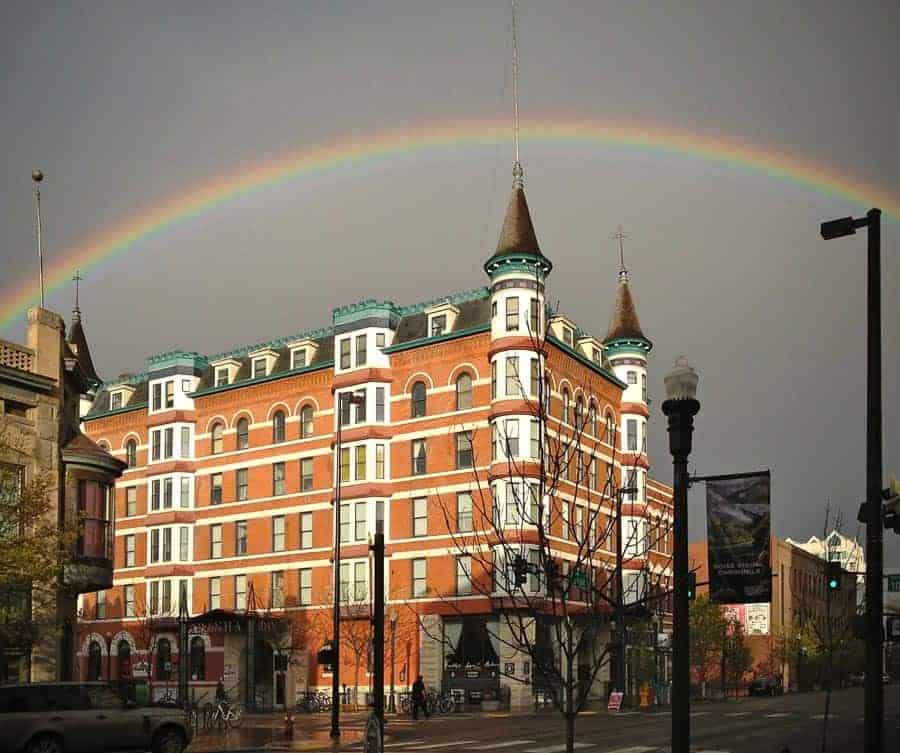
Here’s another tip I found from IP’s Jim Harmer who was writing on using circular polarizers and had this advice about their use with rainbows;

One lesser-known tip for using polarizers is they are fantastic for shooting rainbows. Most people say not to use a polarizer for rainbows because it will make the rainbow disappear. After all, rainbows are caused by glare when the sun's rays hit a pocket of moisture. Don't listen to the people who teach this, because they don't understand that if the polarizer is spun the opposite direction, it can actually INCREASE the amount of glare in a scene more than the natural eye sees. This makes the rainbow even more clear and colorful.

Fakin’ It

So it’s not raining and you want to make rain photos. Or maybe you shot a great image with cool storm clouds and it was raining but the rain just isn’t showing up. What to do? Fake it! No, “digital rain” isn’t as good as the real deal, but it’s so much easier to summon on command. An example; I was out shooting in Canyonlands National Park. We had intermittent cloudbursts where it would rain like mad and then the sun would appear. While standing near the car changing lenses, a rain-drenched raven perched nearby, looking for a handout. Perfect subject! The rain had stopped however. So, back in edit I used Photoshop to add some “rain.” I did the same thing to the shot of the flowers. I’d put them under a sprinkler, but the drops weren’t showing to my satisfaction. “Digital rain” to the rescue!” Google “How to add Rain in Photoshop,” and I know you’ll get lots of tutorials on how to do this.
Singing in the Rain
Hollywood has known for years that if you want to add drama to a scene, add rain. There are so many movies I could name with iconic rain scenes, beautifully created, lit, and filmed with impactful and emotional images. I’d strongly encourage you as a still photographer seeking to make better photos to look at the way cinematographers create images. Notice my use of the word “create.” Many of us, particularly landscape photographers, simply go out and capture what nature offers us. That’s fine and the mark of a good landscape photographer is being able to use the scene and the light presented to best advantage. But in cinema, waiting for the “perfect light” or waiting for it to rain so that a scene can be filmed isn’t an option. Filmmakers know how to make it look like it’s raining with rain towers and devices to put the “rain” where they want it.
Then there’s the light. Rain will show up best when it is backlit and even better when it is against a dark background. Back to the iconic movie scenes, think about how many of them are shot at night so that the “rain” shows up even better. Google “ Singing in the Rain Youtube.” Watch the movie clip and pay close attention to where the light is coming from and how it is used to accentuate the “rain” in the classic scene. While on Youtube also search “Rain Movie Montage” to see clips from many great movie rain scenes.
Easy with a multi-million dollar budget, right? So how can you do this? Jim Harmer has a great tutorial if you are an Improve Photography Plus subscriber. In a portion of his “Lighting in a Flash” workshop, he shows how to set up a rain rig and how to light and shoot the subjects.

A friend and fellow Boise Camera Club member, Bart Cepek is one of our top club photographers and is also doing commercial work. He shared these images showing his rain rig and the resulting photos. Bart used standard PVC pipe and heads to essentially build an elevated sprinkler system supported by light stands. He says configuring this in such a way as to give depth to the falling “rain” pattern makes it look better than simply having a thin wall of falling drops.

For lighting, Bart has two studio strobes at either side and behind the subject coming in at about 45-degrees. (Remember what I said about backlighting the rain). He has another gridded beauty dish coming in from the front of the subject to fill the subjects. This could be done on a smaller scale with speedlights, though of course with less light output the effect would be somewhat diminished.
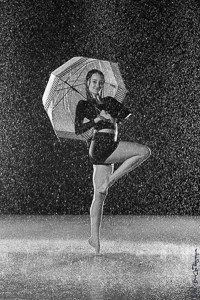
Highly important both to protect the gear, the photographer, and the subjects is to keep all equipment out of the water and covered with plastic. Water ruins electronic equipment while electricity plus water can seriously ruin your day and that of your subjects. No photograph is worth death or injury! Be smart, cautious, and very careful here! As for exposure, Bart says a dark background helps a lot. He sets his exposure so the flash does all the work and a shot made without the flashes firing should be totally black with no effect by any ambient light. Obviously shooting at night makes things much easier.
I asked Bart about doing something like this in the studio and he said yes, it could be done if a catch basin were made and a recirculation pump used. Enough pump pressure would be needed to effectively run the sprinkler and a sizable studio would be needed, but Bart plans to do that in the future. For the rest of us, doing this outdoors on a lawn or in a parking lot at night would give similar results. That and finding subjects willing to get very wet!
Now go try some of these shots, be it in real or “created” rain, and soon instead of thinking a wet day means it’s time to put the camera away you’ll be happily singing, “Here Comes those Rainy Day Photos Again!”
-=-=-=-=-
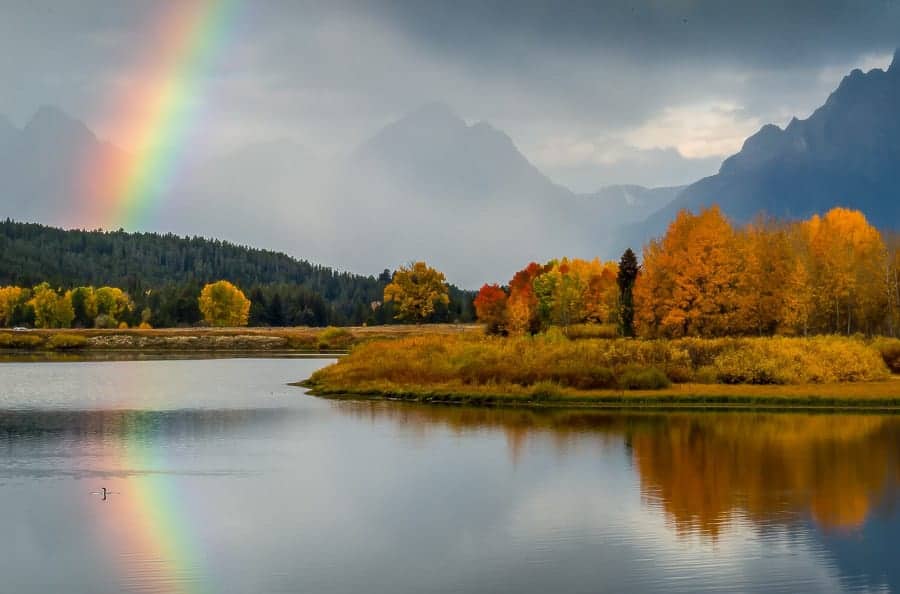
So how’d you do on the rain song artists? Here’s the list –
Raindrops Keep Falling on my Head – B.J. Thomas
High and Dry – Gordon Lightfoot
Get Off of My Cloud – The Rolling Stones
Thunder and Lightning – Chicago
Have You Ever Seen the Rain – Creedence Clearwater Revival
Splish, Splash – Bobby Darin
Reflections – Diana Ross
Raindrops on Roses (My Favorite Things) – Julie Andrews
Somewhere Over the Rainbow – Judy Garland
Fakin’ It – Simon and Garfunkel
Singing in the Rain – Gene Kelley
And finally, a shout-out to many of my Boise Camera Club friends who graciously provided rain photos for this article. Their names are on the photo credits. Thank you so much, friends!

Great article with lots of excellent ideas and suggestions. I am looking forward to the next rain storm. Thanks, I am eager to try some of your ideas…
Thanks Rick for this 🙂
Fun article. Perfect timing too. The rain is coming down here in the west and the next several days will present opportunities to get out and practice these techniques.